If you ever search for a Prosumer Gen4 NVMe SSD anywhere, you will definitely get to see WD Black SN850. We all know that it is an expensive and powerful NVMe SSD out there. It targets the premium set of users, games, and enthusiasts. It has got a lot of competitors as well.
In fact, we have done numerous comparisons of SN850 with different SSDs on SSD Sphere. But, today, we have WD’s own product ready for comparison.
Yes, we are comparing the all-new WD Black SN850X with the already-popular WD Black SN850.
You should know that the SN850X is coming with a promise of comparatively higher data read/write speed than the SN850. The 1TB variant of SN850X has 7300MB/s and 6300MB/s theoretical read/write speed.
If you compare it with the SN850’s 1TB variant, the read speed is 300 MB/s, and the write speed is 1000MB/s higher.
The SN850X is coming with the same controller but with updated firmware and components. The BiCS5 NAND Flash in SN850X is competing pretty tough with the competitors. But, the SN850 is keeping its legacy further and giving a perfect blend of affordability and performance.
We are going to test and reveal the key differences and the actual performance comparison later in the article. So, keep reading until the end.
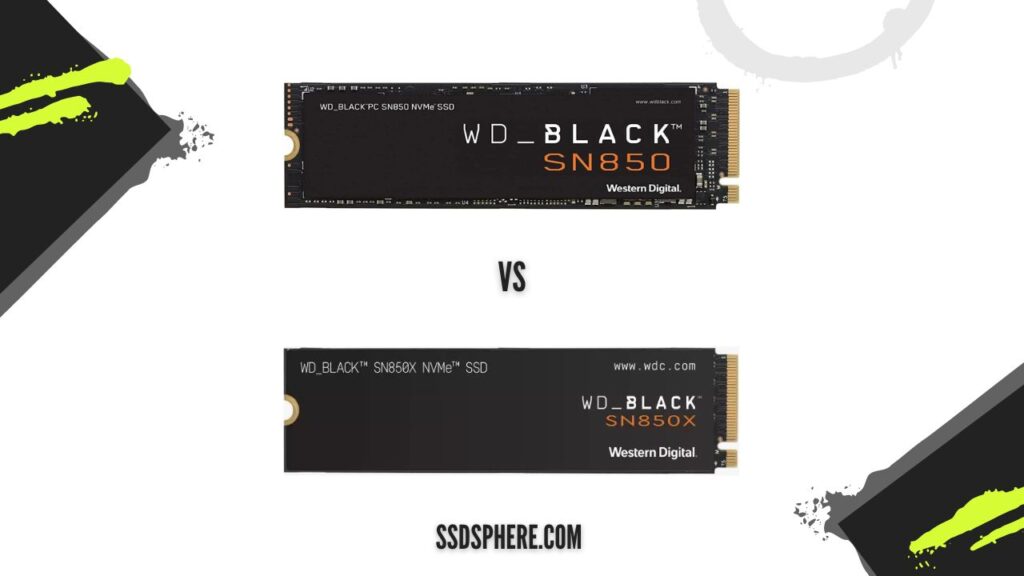
Theoretical Specifications (WD Black SN850X vs SN850)
| Specification | WD Black SN850 | WD Black SN850X |
|---|---|---|
| Storage Variants | 500GB, 1TB, 2TB | 1TB, 2TB, 4TB |
| Theoretical Read Speed (Seq) | 7000 MB/s | 7300 MB/s |
| Theoretical Write Speed (Seq) | 5300 MB/s | 6300 MB/s |
| Random Read Speed | 1,000K IOPS | 1,200K IOPS |
| Random Write Speed | 1,000K IOPS | 1,100K IOPS |
| Warranty | 5 Years | 5 Years |
| Heatsink Option | Available | Available |
| Encryption | Not Available | Not Available |
SN850 doesn’t have a 4TB variant but SN850X comes with a 4TB variant. However, it doesn’t have a 500GB variant like the SN850.
Moreover, SN850X has a 300MB/s higher data read speed and a 1000MB/s write speed. The random read/write speed is also supposed to be higher than the SN850. But, all these things will get tested in the real-time benchmark scores. So, let’s proceed further.
Both come with the heatsink option. So, if you are going to use these SSDs for heavy tasks, you should go for the heatsink versions.
Benchmark Scores (SN850 vs SN850X)
The test bench is equipped with an Intel Core i5 12600K CPU along with a 16GB DDR4 4800MHz RAM kit. The motherboard is MSI Pro Z690-A DDR5. Both the SSDs are 100% empty during the tests and 2TB variants are utilized to run the benchmark tests. Other variants may have different performance results.
Sequential and Random Read/Write Performance
For these tests, I have used the CrystalDiskMark software. CrystalDismMark is another simple-to-use storage benchmark software. It is generally used to run sequential and random system tests using different file sizes. The default sequential read/write test is 1M at Q8T1 and Q1T1. The default is random read/write test is 4KB at Q32T1 and Q1T1. You can easily change these test types along with the total test file size.
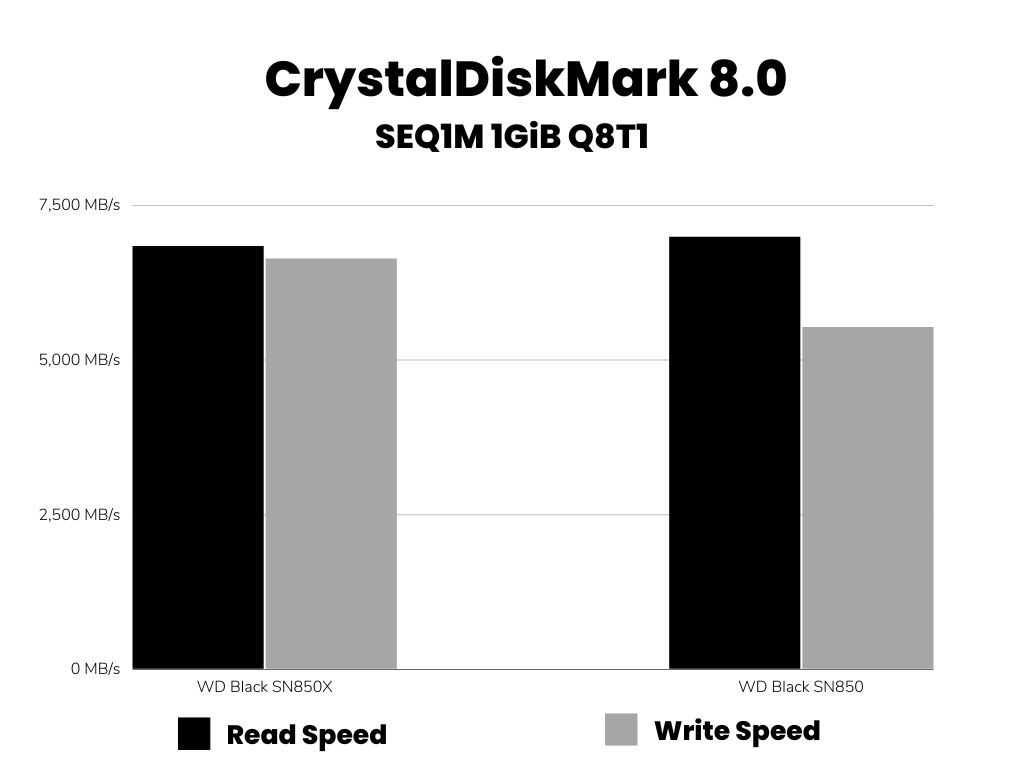
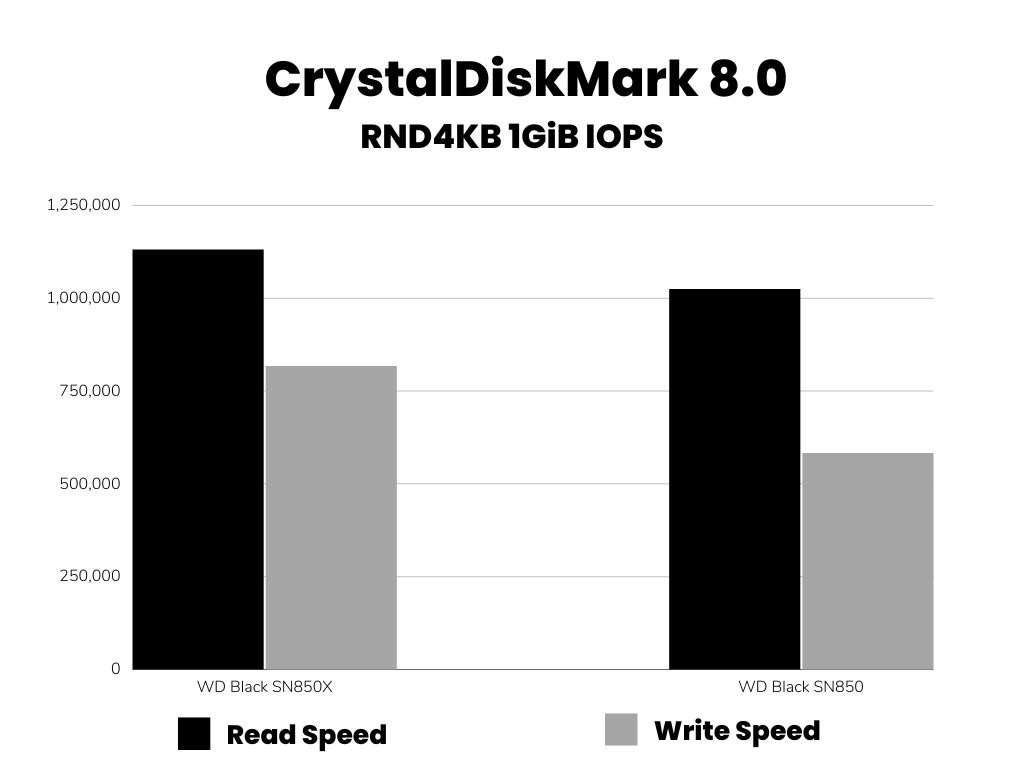
3DMark- SSD Performance for Gamers
Do not get confused here. In this test, I have used the Game Modes of these SSDs to check the difference in benchmarks. So, there are three modes i.e. Game Mode On, Off, and Auto.
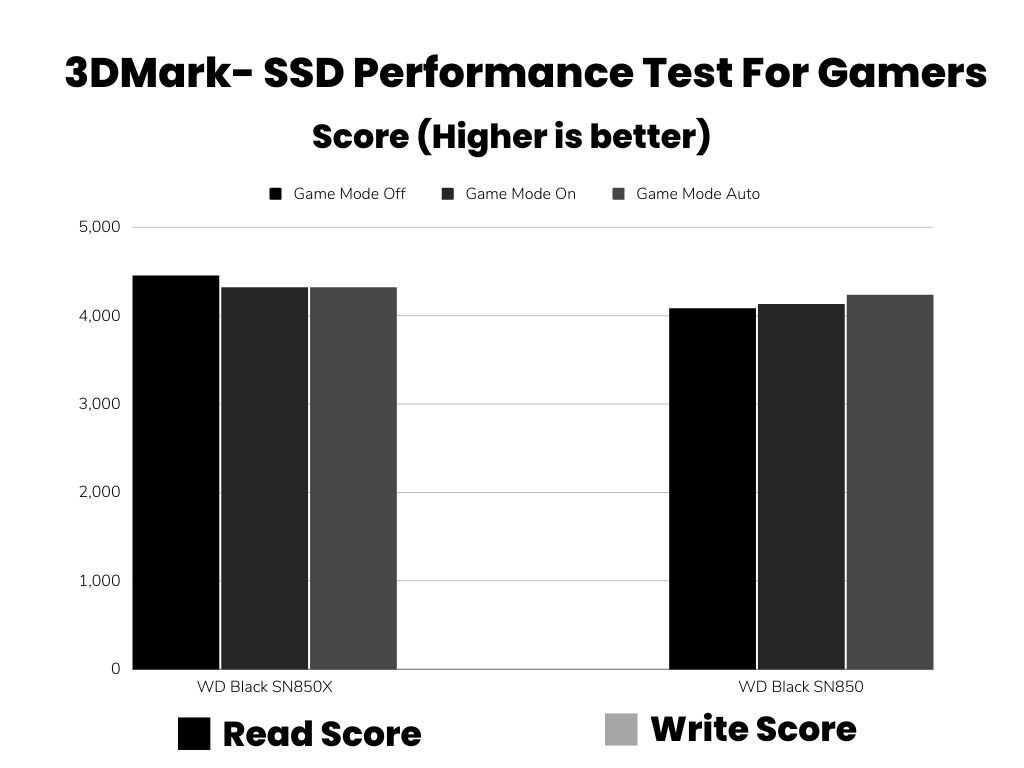
AS SSD Benchmark Scores Comparison
AS SSD is another very popular storage benchmarking software. It again runs some random tests to test sequential and random performance. You can set the test size from 1GB to 10GB. It will give you a score that can be helpful to compare the performance of two different SSDs.
We have used the 1GB Test size here for our benchmarks.
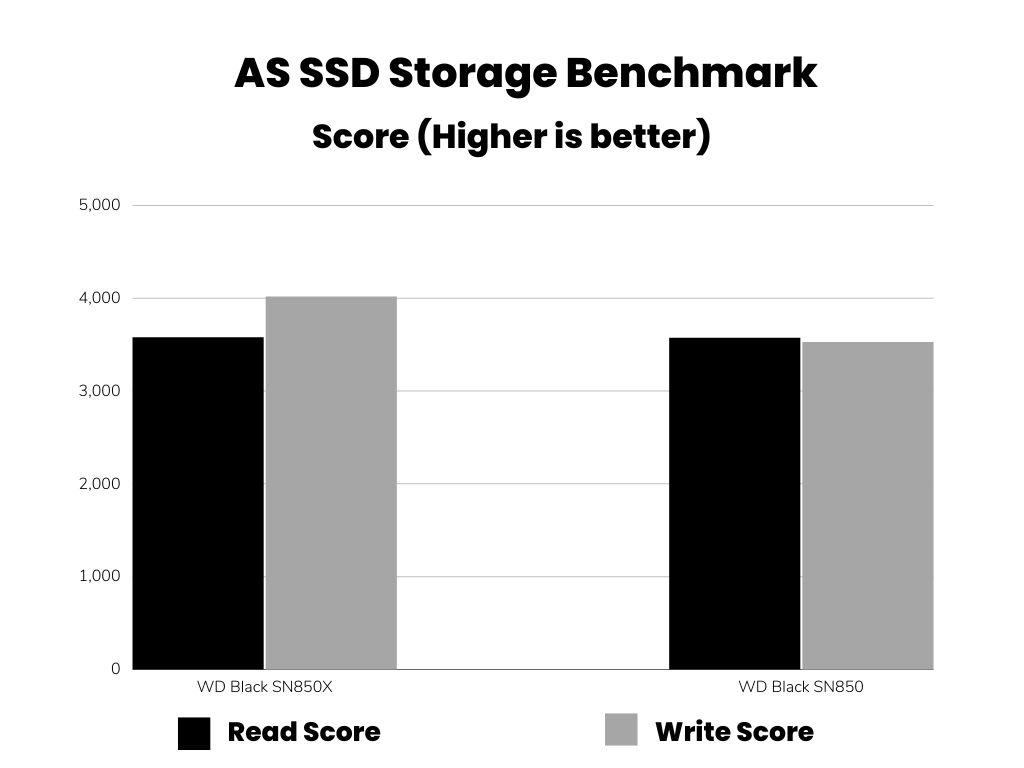
Anvil’s Storage Utilities
Anvils Storage Utilities is our next benchmark software with a pretty simple interface. It runs all the tests automatically and gives you a final score. A higher number means better performance. It runs a wide array of tests including Seq 4MB, 4K, 4K QD4, 4K QD16, 32K, and 128K, in both read and write formats. The test size here in this case is 8GB.
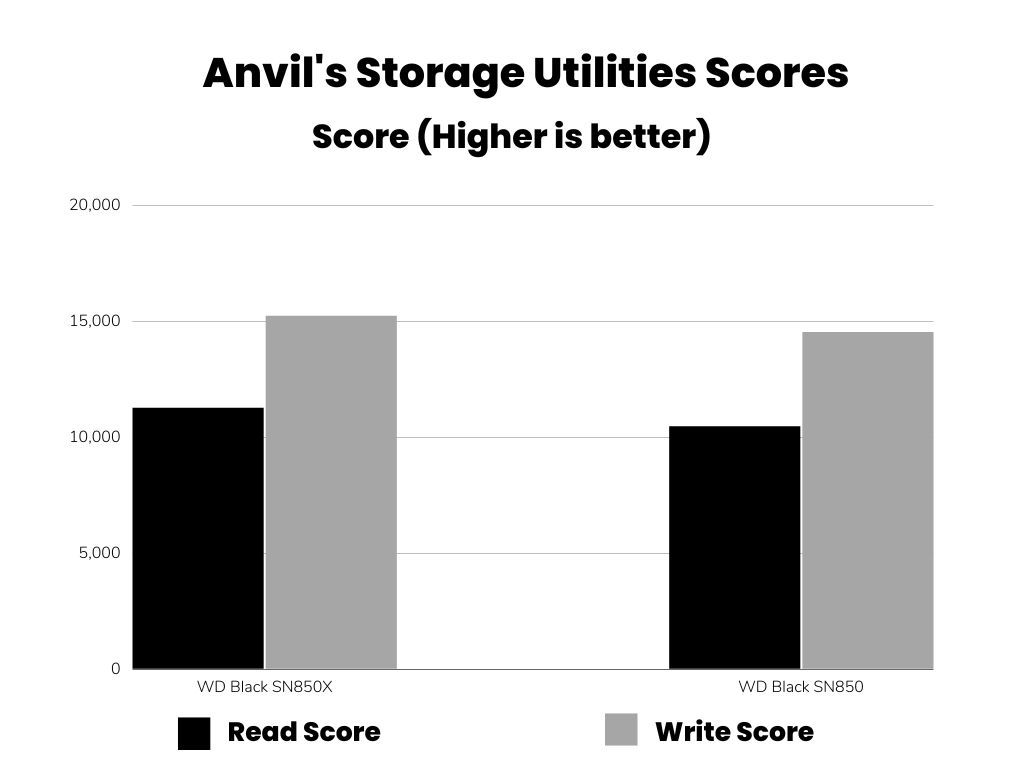
PCMark 10 Benchmark Scores
These benchmarks are done with Game Mode turned On and Off for both the SSDs. There isn’t much difference in the results. But, still, you can see that in the graph below.
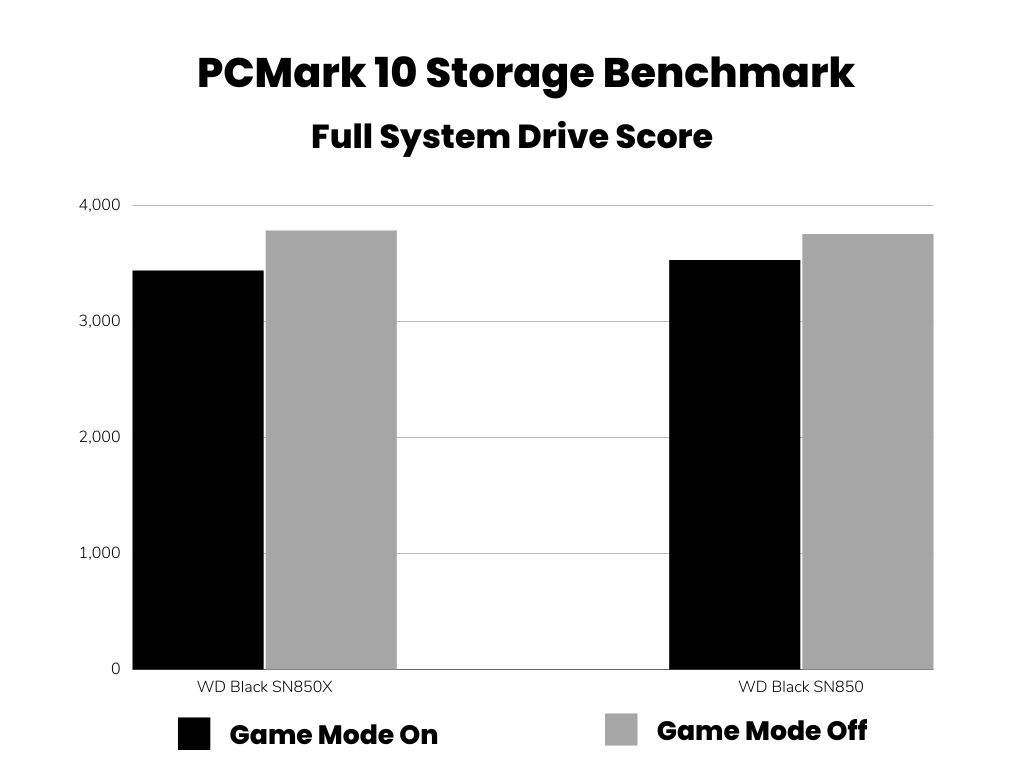
AJA System Test Results
I am using 1920×1080 HD 1080i resolution for this test. The Test size is 1GB and the Codec is 10bit YUV.
| WD Black SN850 1TB | WD Black SN850X 1TB |
|---|---|
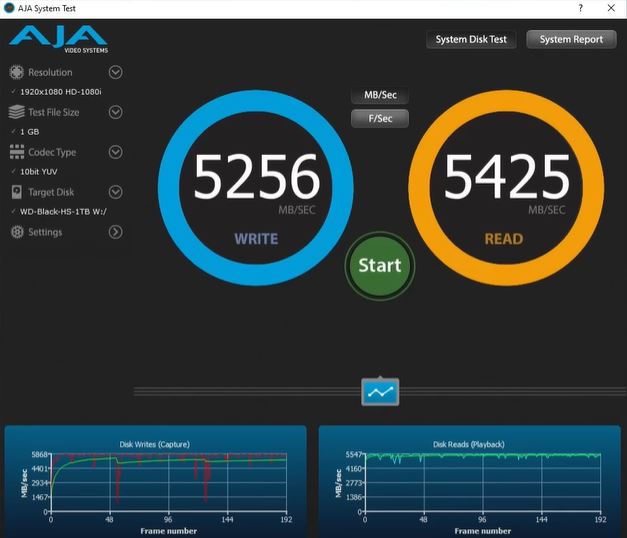 | 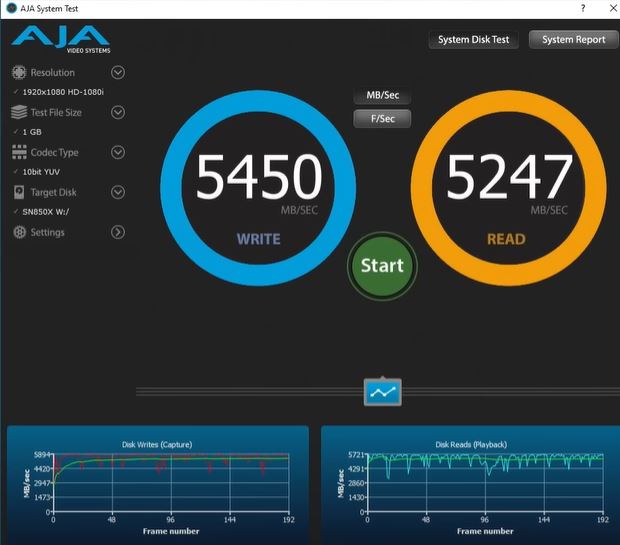 |
Obviously, you have got everything by looking at the benchmark results. But, I would like to tell you that both SSDs are competing hard and creating new trends in the SSD market.
I am really impressed by the sequential and random write speed 850X is offering. But, SN850 is the winner when it comes to the read operations.
I can recommend both of these to any user who is looking just for performance. For games and enthusiasts, these are both great SSDs to go with.
Endurance and TBW
| Parameter | WD Black SN850X | WD Black SN850 |
|---|---|---|
| TBW | 1TB: 600 TBW 2TB: 1,200 TBW 4TB: 2,400 TBW | 500GB: 300 TBW 1TB: 600 TBW 2TB: 1,200 TBW |
| Warranty | 5-Years Limited Warranty | 5-Years Limited Warranty |
| MTBF (Mean Time Between Failure) | – | 1.75 Million Hours |
The TBW (Total Terabytes Written) of the matching capacities is the same. However, if you go for the 4TB variant of the SN850X, it’s going to give you a huge TBW limit which means a lot of usage for a longer period of time. Overall, the WD SSDs are reliable. So, you do not have to worry about reliability and customer support.
Technical Specifications (WD Black SN850X vs SN850)
| Technical Specification | WD Black SN850X | WD Black SN850 |
|---|---|---|
| NAND Flash Type | Sandisk’s TLC NAND | Sandisk’s TLC 3D |
| NAND Flash Layers | 112 | 109 |
| Controller | WD Proprietary Controller | WD Proprietary Controller |
| Controller Configurations | Tri-core/8-Channels | 8-Channels |
| DRAM | DDR4 DRAM | DDR4 DRAM |
| Heatsink Option | Available | Available |
| T.R.I.M. | Available | Available |
| S.M.A.R.T. | Available | Available |
| Encryption | Not Available | Not Available |
| Datasheet | WD Black SN850X | WD Black SN850 |
The number of layers is definitely higher in the SN850X but it still lacks a lot. The 112-Layer BiCS5 Flash is reliable for binning but still, the opponents such as SK Hynix and Micron have some better things to offer.
The controller inside the SN850X is an updated version of the SN850 itself. SN850X again is using an 8-channel but the components including flash and firmware have been upgraded.
Price


Advantages of SN850X over the SN850
There were some issues reported by the users related to the SN850. One major issue was its overheating problem. The SN850X comes up with a fix to this.
Also, there was a high idle power usage which is now fixed with the SN850X. SN850X still uses a lot of power but those unwanted fluctuations are now gone.
One of the biggest advantages of the SN850X is its great post-cache performance. For gaming and content creation, this can prove to be a great benefit for users. The dedicated game mode is now improving as the company had promised after the launch of SN850X. However, the SN850 is also known for its fast-recovering SLC caching.
So, overall SN850X is a perfect pick for gaming builds as well as the PS5 users. However, the SN850 can give you a perfect balance of price and performance.
Which one should you buy? SN850 or SN850X
By the time I am writing this article, SN850X is surprisingly cheaper than the SN850 and I hope it remains the same. Between these both, I would recommend going for the SN850X because it has better performance. However, as we discussed earlier, the SN850 is good in terms of write operations.
Both are using the same TLC NAND Flash from Sandisk. But, both lack data encryption as well.
Overall, the SN850X is capable of providing you with better results. Now, if you are able to get the SN850 at a cheaper price or if you just want to go for it, there is no problem with it as well.
Let me know what you think about this article in the comments.
Other similar Gen 4 NVMe SSDs
| Kingston KC3000 |  | 7000/7000 MB/s DDR4 DRAM TLC NAND 256-bit Encryption | Check Price |
| Seagate Firecuda 530 |  | 7300/6900 MB/s DDR4 DRAM TLC NAND 256-bit Encryption | Check Price |
thanks!